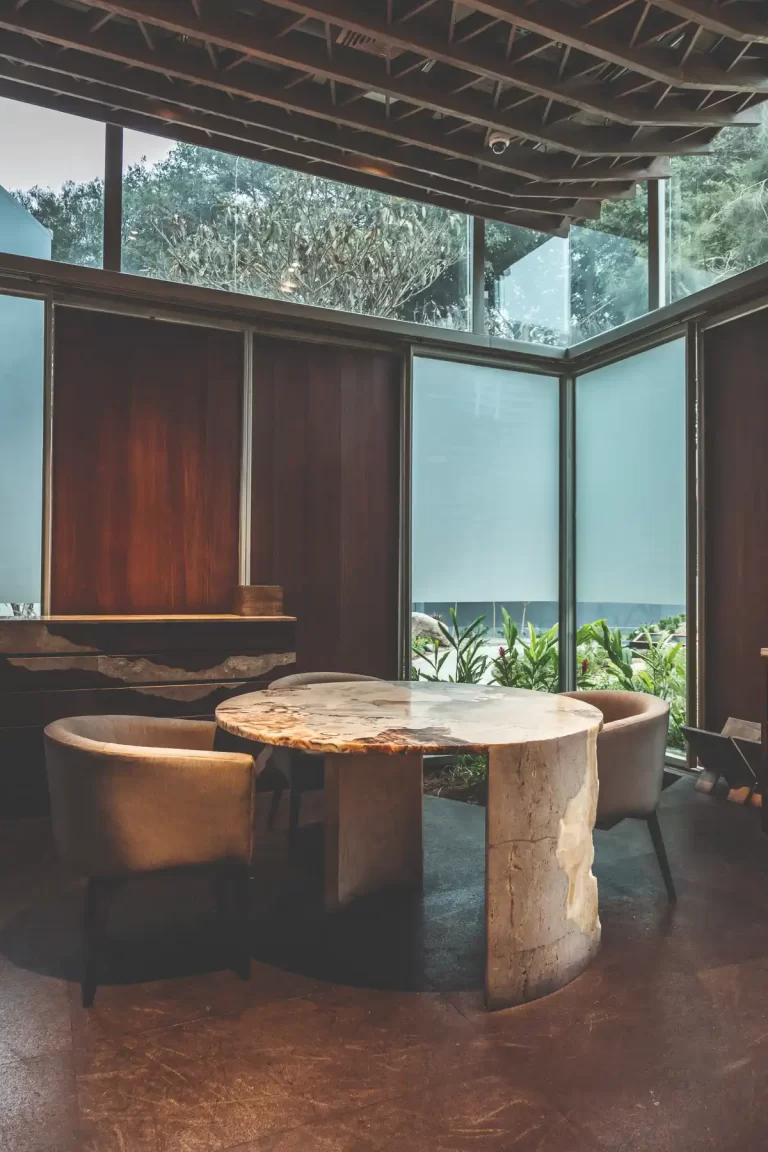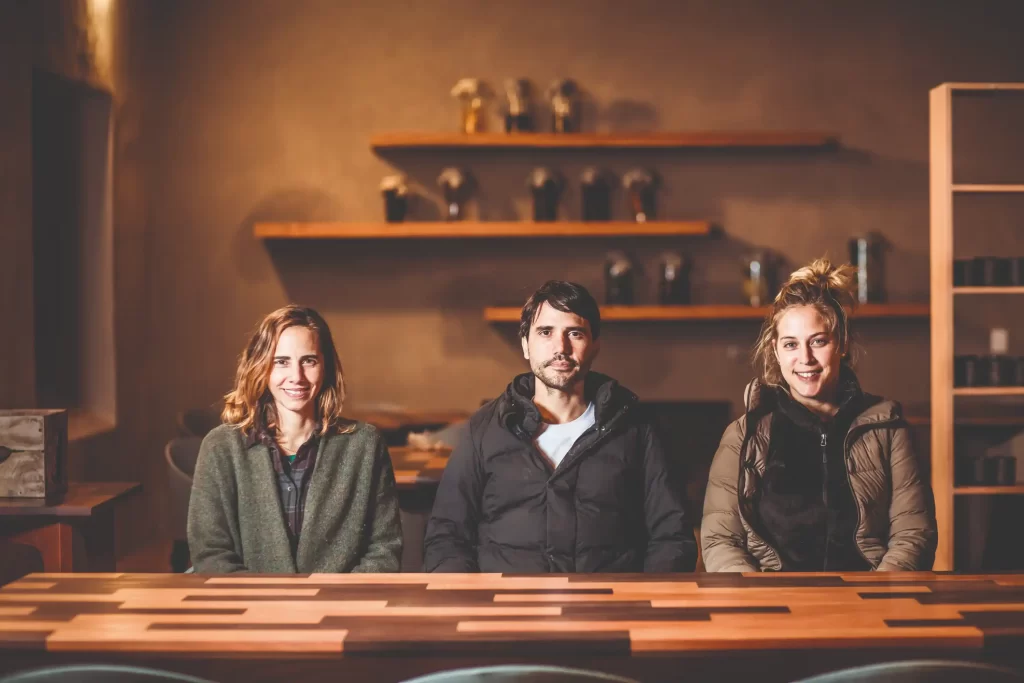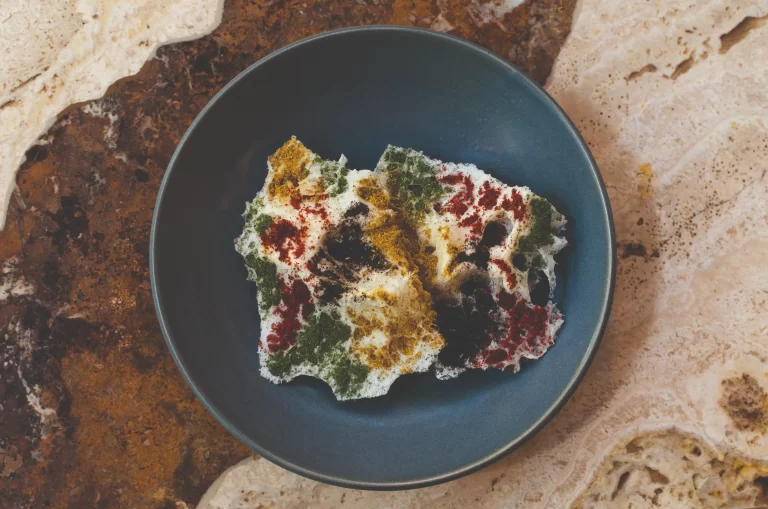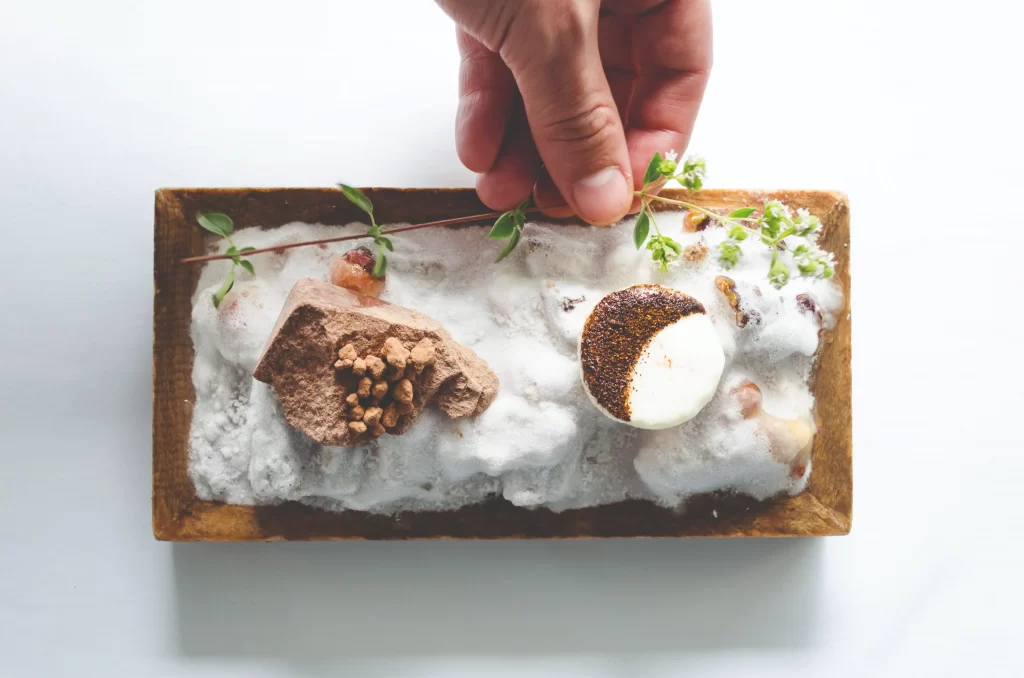“I think many people inspired me during my childhood in Lima in Peru. I was close to food most of the time. Close to producers, to fishermen, very exposed to food in general and people talking about it. I believe food has always been really important for my family.”
Although food took centre-stage in Virgilio Martínez’s youth and his family dynamic, turning it into a professional career never initially seemed plausible to the now-world-renowned chef. With a burning desire to cook but no local culinary schools or public figure chefs to seek advice from, Virgilio instead decided to venture overseas to pursue his cooking dreams.
“There were no cooking schools in Peru at the time, so it wasn’t an option to think of becoming a chef or think of a life as a cook. Also, there were no chefs outside a kitchen, so you really had no idea what was it like to work there.
“After a few years abroad, I got inside a kitchen to have the means to sustain myself, and then I realised I was exactly where I was supposed to be. When I came back to Peru, everything had changed.”
While travelling, Martínez dived head-first into the international cooking scene, starting off with obtaining certifications from Le Cordon Bleu in Ottawa and London. He then went on to gain experience at various restaurants, exploring cuisines from France, Italy, London and South- East Asia. He also worked at the renowned Lutèce in New York and Astrid & Gastón in both Bogotá and Madrid.
After a decade traversing the globe, Virgilio returned home with a newfound purpose and a passion, and he set to work building his culinary dominion. In 2010, his flagship Central restaurant opened its doors in Lima’s upmarket Miraflores district, and it quickly rose to international acclaim for its innovative and inspiring use of regional and unusual produce.
With the restaurant’s reputation growing and its ideas expanding, it wasn’t long before Martínez knew it was time to find a bigger space, and Central moved across the city to a larger premises in the hip Barranco neighbourhood in 2018. Central 2.0 is a beautiful, airy space in a revamped factory building. Also located in the new venue is his wife and business partner Pia León’s solo venture, Kjolle, as well as trendy cocktail bar Mayo, and a vegetable garden and new facility for Mater Iniciativa, the research hub run by Virgilio’s sister, Malena.
“Moving Central to another place had to happen. It was about time we had more space, and we designed something that structurally would hold us and our future projects. Mater Iniciativa became bigger and decentralised: it grew in our new location and also in Mil, our place in Cusco. It all happened really fast, in months.”
“So the research area got bigger, and more people can now come to the restaurant. We are working on our creativity and on new adventures. We have plenty of room to process and deal with things we didn’t have space to accommodate years ago. Now we can share, think, move and continue growing as we were supposed to be growing a few years ago.”
Another benefit of increased space is more room for the streamlining of processes, including the restaurant’s efforts to be as sustainable as possible. Recycling, composting and adopting a zero-food-waste attitude is just the beginning at Central. Here, Martínez and his team think of sustainability on a more metaphysical level, intuitively blending research, environmental awareness and biodiversity to foster a truly holistic culinary approach.
“Sustainability is something we should all have in our hearts. We should all understand the importance of being sustainable, whether it is as a business, a restaurant or a human being. There are clear ideas from spiritualism that let you get to sustainable answers; there are now ways to negotiate sustainability. That’s why it’s very difficult to explain what sustainability is when you don’t have it in your heart, inside you.
“It helps us a lot that we are in constant communication with people who live in harmony with nature in the Andes and in the Amazon. They are connected and grounded to their surrounds, so it’s their lifestyle, part of their life; their culture and food is a component in all that. That lifestyle teaches us about balance.”
Balance plays as much of an integral role off the plate as it does on in Virgilio’s cooking, as he aims to create dishes with flavours that are in complete harmony with one another. To do this, the chef scours Peru’s wildly diverse topography – from the depths of the ocean to the heights of the Andes – to find ingredients that represent the country’s many ecosystems.
“It’s difficult to say ‘local’ when we are in Peru. Even though we use the ingredients from local communities, there is so much biodiversity, so many different microclimates, products and seasons that it is hard to apply the term ‘local’ when you can provide ingredients all year as they can come from different origins within one region. So, all in this rich and productive context we just need to work on finding the right information and consistency in places where consistency has no meaning. Irregularity is mostly a rule. And we embrace it.
“I think my cooking style is mostly inspired by this diversity and finding new ingredients and emotions. It’s a lot about learning too, every single day, so it has definitely evolved over time.”
The menu at Central reflects the chef ’s passion for Peru’s biodiversity, and showcases the country’s myriad ingredients in a gastronomic odyssey spanning 16 different ecosystems. From -10 to 4,300 metres above sea level, the chef selects different products that best represent these altitudes and spotlights them in his dishes. Always in constant evolution, his creations centre on continuous movement, observation and respect for the temporality and the seasonality as dictated by Earth.
“Now we are doing 16 ‘elevations’ – that’s what we call them – in our menu, talking about 16 different ecosystems in our territory. Every dish translates the spirit of what we find in one place, one ecosystem. Every component in each dish has been chosen because they belong together, in nature as in the dish. It tells the story behind how we can cook and work with different people from different disciplines.
“The whole experience has to make sense. The 16 preparations have to be very coherent – that is why it’s very difficult to pick one favourite. During the experience we talk about what we have been doing the last five years, working on exploring different territories, with ingredients people haven’t seen before and bringing them to the dining room. It is about touching and feeling the unknown, creating new memories. For that we need to work a lot on the service, to stay unique and truthful to who we are. The whole place should make food and people speak the same language, but it also has to be impressive in a way that you feel comfortable spending four hours enjoying and learning about these foods.”
The creative journey of these dishes is one that involves many elements, but it all begins with the ingredients at their source and Malena’s input from her research at Mater Iniciativa. The work of Mater Iniciativa is fundamental to Central and its extraordinary culinary offerings. What began many years back when Virgilio asked Malena for assistance in collecting novel native produce has since evolved into a full- scale research project that now undertakes expeditions to all parts of Peru – from its darkest jungle corners to its highest snow-capped peaks.
“It begins with all the information in hand. With having visited the place and explored completely what it is about, Mater articulates knowledge and this feeds us with what we need to direct our processes in the kitchen. In all our kitchens.
“We listen about a product, and its context, and then translate this information into one dish. We take what we know from outside to the inside of the kitchen. And we try and transmit the same emotions of being in the place where ingredients come from to people trying the food.”
To be such a visionary requires immense creativity and drive – traits that seem to come easily to the chef, especially when he’s fully aware of the remarkable impact that his food has on people.
“To be creative we should be in good shape. Positive, energetic, with a clear mind, in a good place. Yes, I guess it is easier to get creative when you know you are working on something with transcendence, that means something, and that is positively affecting so many people.”
With Central being awarded The Best Restaurant in Latin America by The World’s 50 Best Restaurants multiple times, the effect the restaurant has on people is apparent. Central’s unbridled success stems from Martínez’s distinctive culinary mantra that melds countless little constituents to create a wildly impressive whole.
“At Central, we have worked hard on offering something new, different and unique, from where it is located to where food comes from. We have a garden full of edible plants that come into the experience, and rocks from Huancavelica and Ayacucho, in the central Andes of Peru, to make stone tables. Everything you see and perceive is not only a novelty, but is also authentic and inviting. It is asking visitors to get involved.”
Much like the dining experience at Central, the future of food in general is something that Virgilio believes everyone can contribute to. This Peruvian culinary mastermind is impactful, inspiring and taking gastronomy to previously unimaginable zeniths.
“Perseverance and staying focused on where you want to go, deciding which is the right direction. Not taking anything for granted, and being able to adapt to changes quickly, to get more information and be more involved with the places where food actually comes from. To identify difficulties for producers and make choices to prevent creating imbalance in an ecosystem. We should work together.”
Find out more about Virgilio and Central at centralrestaurante.com.
PHOTOGRAPHY BY CÉSAR DEL RIO & GUSTAVO VIVANCO









